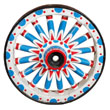Ringling Bros. and Barnum & Bailey Circus Midway / Side Show Calliope # 70
In the winter of 1948/1949, the Ringling Bros. and Barnum & Bailey Circus bought 12 former military ordinance trailers. They had four wheels on them and had lots of drawers of various sizes on them to haul the various sizes of ammunition. All twelve of these trailers were then given dual wheels, had a wagon body built up with a full set of bars on the passenger’s side of the cage and a half set of bars on the back side for cleaning the cages. Panels were then designed to fold shut over the full set of bars that would then open to create a gigantic picture frame around the barred opening. These cages were sequentially numbered from 70 to 81. A 1960 sight inventory found in the Ringling files at Circus World’s Parkinson research Library shows the wagon was put into service for tax purposes on 3/31/1949. The prescribed valuation of $1,725.52 figured in the cost of the purchase and the improvements with materials and labor to create the new wagon.


( RBBB Records in the files of Circus World’s Parkinson Research Library. )
In the first year of service, this wagon was built under the guidance of RBBB Wagon master Bill Yeske. It was painted a brilliant Ringling Red with a jungle scene on the opened panels. The cage offered two tigers on display inside the menagerie. The wagon was then left behind and never used for the 1950 or 1951 seasons. The Sarasota winter quarters offered calliope music as seen in this 1951 slide.
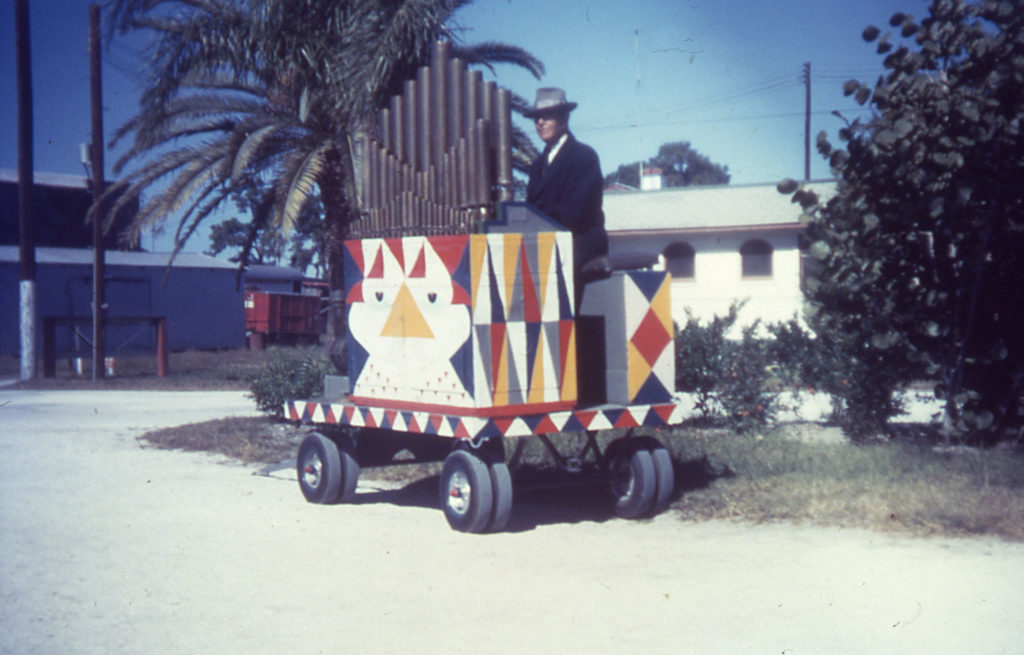
( Winter of 1951/1952 – Richard Conover slide )
This wagon was rebuilt in the winter of 1951/1952. The bars were removed from both sides. The entire back end was taken off and re-built with flip up and flip down doors. Vent openings were added to the sides and the side show entrance panel was mounted to the top of this wagon. A front door was added with a ladder to get to the top of the wagon. The front end would become the Side Show Office. It was now ready to be placed at the Side Show entrance, in between the side show bannerline wagons. Still painted Ringling Red, it now carried a diamond pattern in the middle with the show title on it.
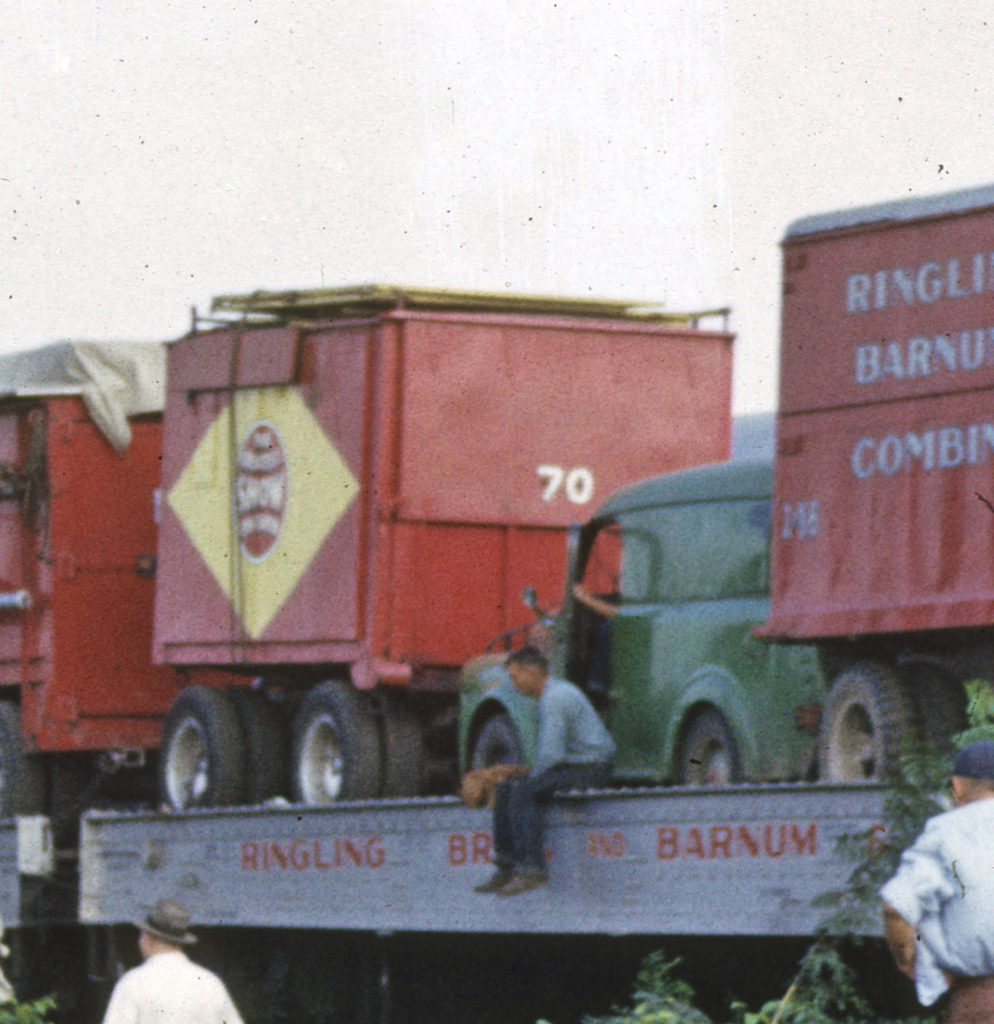
( 1952 – leaving Columbus, Ohio on August 3, 1952 – Sverre Braathen slide – Used with permission from Illinois State University’s Special Collections, Milner Library )
1952 would be the very first time a lattice framework would be used as a Sideshow entrance. The design was built to create a slanted effect. The framework folded up with hinges much like the frameworks on top of the ticket wagons.
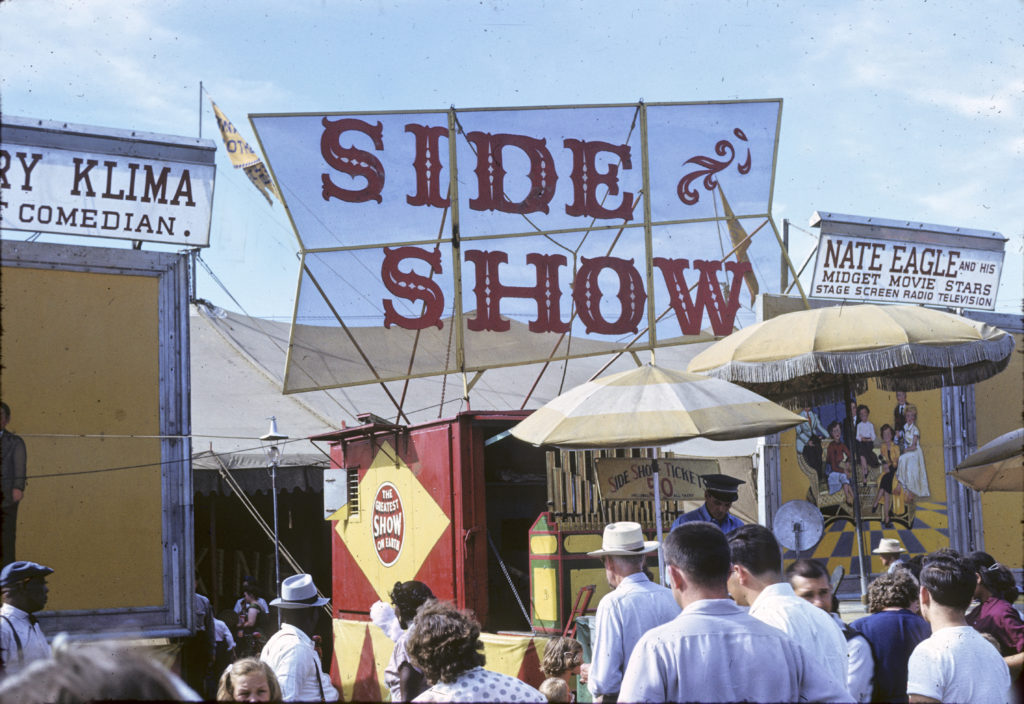
( 1952 – July 31, 1952 in Springfield, Ohio – Sverre Braathen photo – Used with permission from Illinois State University’s Special Collections, Milner Library )
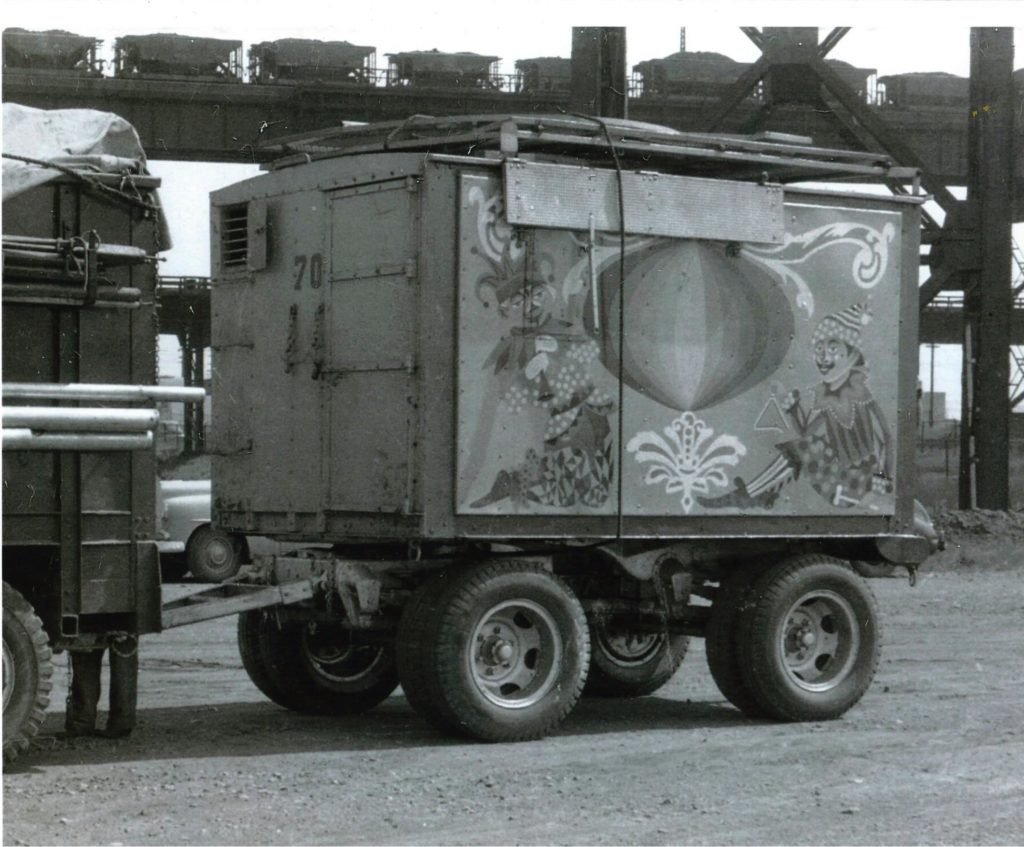
( 1953 – This photo shows the front door that was cut into this wagon – Dom Yodice collection )
For the 1953 season, the wagon was drastically repainted. Character designs was painted on the wagon sides with the lattice framework on top being completely re-made into a more rounded configuration.
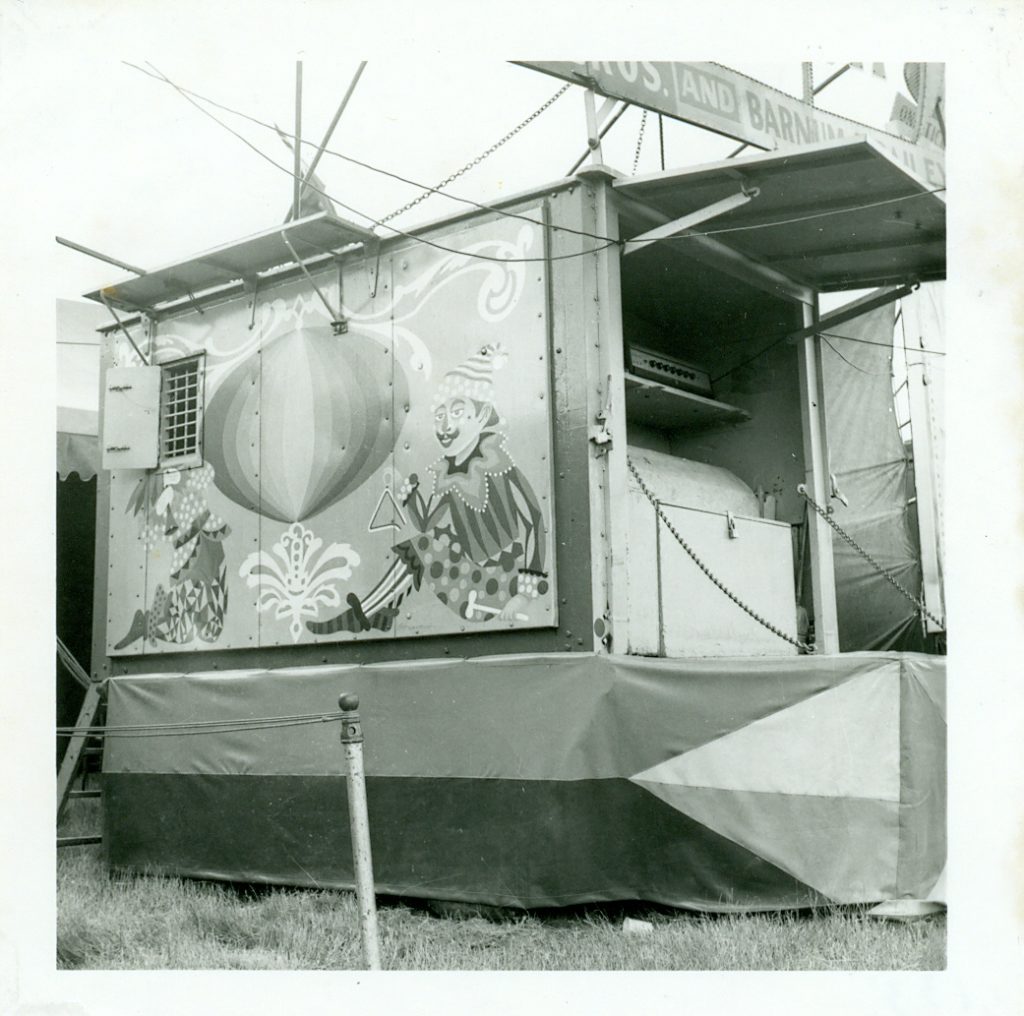
( 1953 – Conover Set # 447, photo # 7133 )
For the 1954 season, the artwork of Bill Ballantine took over the midway with the side show banners being all repainted, the short ammo cages being painted what was called Haitian Primitive the ticket wagons changing colors and this wagon changed completely in the painting.
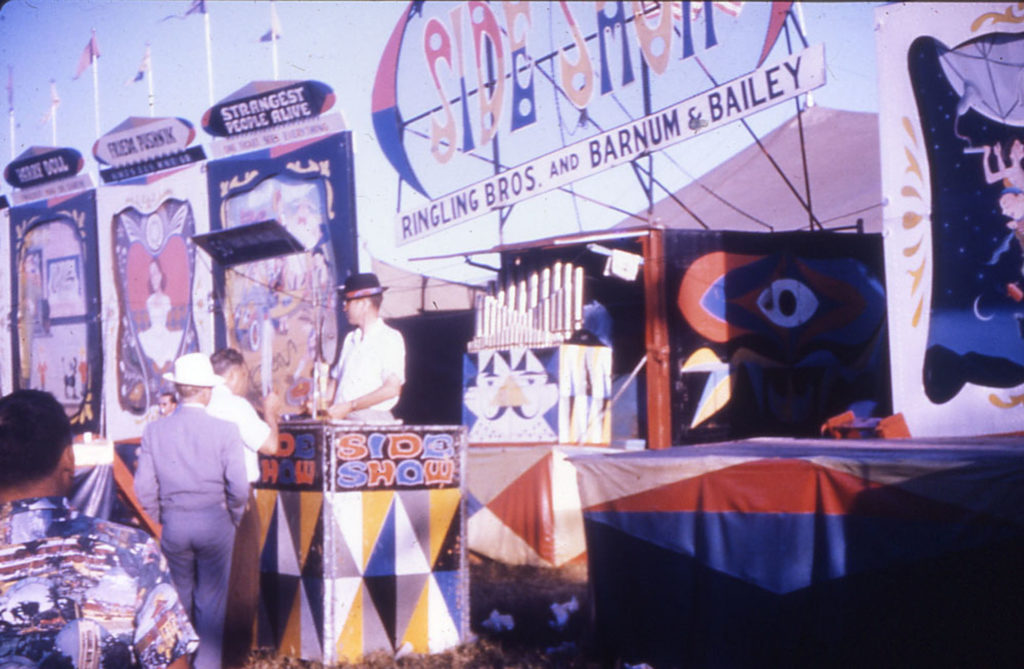
( 1954 – Richard Conover slide )
In 1955, the wagon was again re-painted a complete new design. The overhead lattice work remained the same but it was also re-pained with different colors.
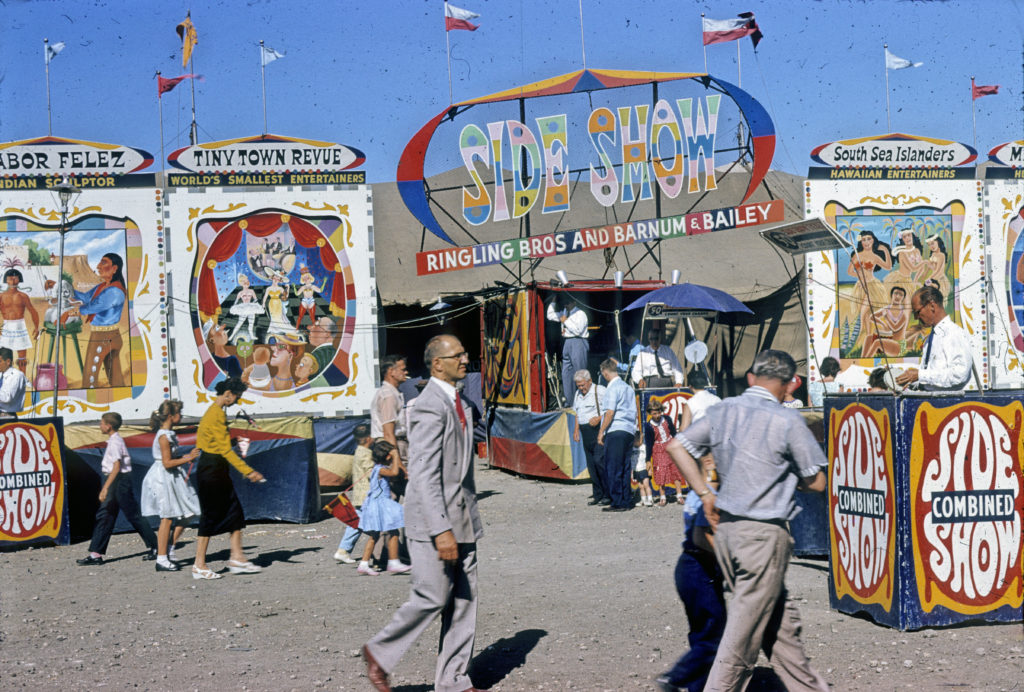
( 1955 – July 3, 1955 in Detroit, MI. – Sverre Braathen collection – Used with permission from Illinois State University’s Special Collections, Milner Library )
For the 1956 season, the entire midway was re-painted with a red, white and blue striped pattern. That included this wagon. The upper lattice framework also had the letters repainted again.
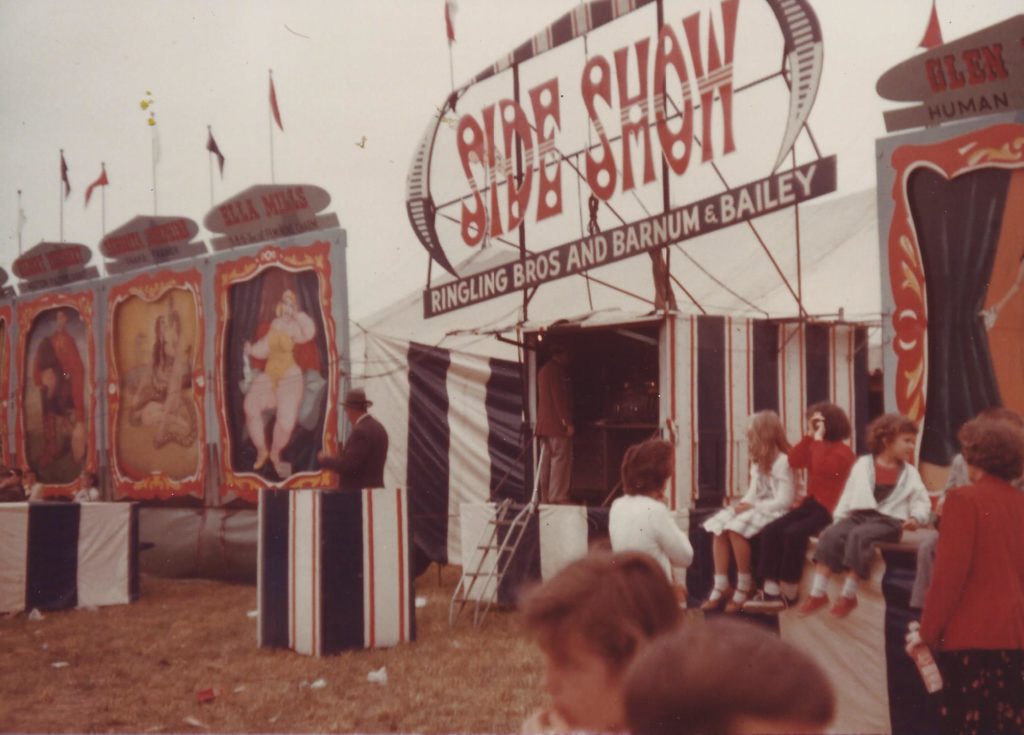
( 1956 – Frank Connors photo in the Dom Yodice collection )
Sadly, the Ringling Bros. and Barnum & Bailey Circus closed their under canvas tour forever on July 16th, 1956 in Pittsburgh, Pennsylvania. Once the show was slowly torn down and loaded up, it was all returned to their Sarasota, Florida winter quarters. Almost immediately, the pieces of the show were up for sale. This wagon was never needed again. Once the decision was made to leave Sarasota and re-locate the winter quarters to Venice, Florida, anything remaining from the under canvas days was moved to Venice. many of the old wagons were parked near the railroad sidings.
(1) On March 19, 1962, a spark from a cutting torch ignited a fire that ended up consuming twelve of the under canvas wagons by the tracks. This wagon was one of the fatalities that day. I have asked a couple people whether the calliope unit was still in the wagon when it burned up but no one has been able to say for certain whether it was or not.
(1) Jim Caldwell, Little Circus Wagon, Jan. / Feb. 1981, pp.13-14 & 19-24.
If you have any questions or have more photographic evidence, feel free to contact us at circuswagons@gmail.com
